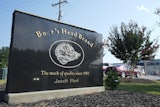This feature originally ran in the March 2012 issue of Food Manufacturing.
The HACCP Update section of Food Manufacturing is designed to offer our readers insight into the state of HACCP implementation and compliance across the Industry. We received hundreds of responses to this month's survey on seafood processing.
This month, Food Manufacturing is revisiting a survey topic from our November/December 2011 issue. With the International Boston Seafood Show (March 11–13) just around the corner, we again asked readers from the seafood industry to report on how HACCP is being implemented in their facilities and how the regulatory environment is impacting production.
Like meat, poultry and dairy, the seafood industry has its HACCP planning guidelines set by the Food and Drug Administration. Under last year's Food Safety Modernization Act (FSMA), HACCP planning is mandatory for all food processing facilities, but whether all vertical industry segments will receive specific plan guidance like the poultry industry remains unclear.
As noted in the chart at left, when asked about the ease of mandatory HACCP planning compared to less regulated industry segments, seafood processors returned a split result. Only a third find mandatory HACCP planning to be more difficult than non-mandatory planning, while slightly fewer respondents found mandatory HACCP planning to be easier. The remaining respondents reported little difference across the industry.
A case could be made that HACCP-mandatory facilities have an easier time writing plans; workers in those facilities have a guide and don't have to write HACCP plans from scratch. An equally compelling case can be made that facilities with non-specific HACCP guidelines have an easier time writing plans; workers in those facilities can write plans that address the actual problems in their plants instead of writing plans simply to meet regulatory standards. One survey respondent noted that "[HACCP planning is] easier without [mandated plans] because regulatory agencies can inadvertently direct a processor in the wrong direction to satisfy regulation but not necessarily mitigate risks specific to each facility."
But despite some hesitance about the ease of writing HACCP plans under specific directives, survey respondents report overwhelming satisfaction with the food safety culture brought about by mandatory HACCP planning. When asked, "Do you think that processors operating seafood facilities with mandatory HACCP plans have better HACCP plans than less regulated facilities?" Food Manufacturing readers reported:
- Seafood facilities have HACCP plans that better protect the food supply because the FDA guides the seafood industry toward best practices—52.4%
- Plans are probably roughly equal in their effectiveness in all facilities—28.6%
- Less regulated facilities have HACCP plans that better protect the food supply because they are able to specifically tailor HACCP plans to their needs instead of worrying about complying with FDA mandates—33.3%
Seafood industry readers also believe that, regardless of whether specific HACCP guidance is written for all industries, mandating HACCP planning across the industry is the right thing to do. When asked whether the FSMA mandate was an appropriate change, readers reported:
- Yes, all food segments should be required to write and implement HACCP plans—85.7%
- No, HACCP planning should be mandatory only in the industries for which it is currently mandatory—9.5%
- No, HACCP planning should not be mandatory for anyone—4.8%
Seafood industry readers even feel overwhelmingly positive about the specific plans for the seafood industry. Exactly two-thirds report that "FDA guidance for HACCP planning in seafood processing facilities is appropriate to address the specific challenges and critical control points associated with seafood processing."
Though seafood processors report some hesitance about over-regulation and mandated HACCP planning, this report suggests that if problems are to be resolved, the HACCP planning protocol for seafood needs only be tweaked, not abolished, to achieve maximum food safety in seafood plants. Processors report a high level of comfort with their plans and a high level of confidence with the safety culture they produce.






















